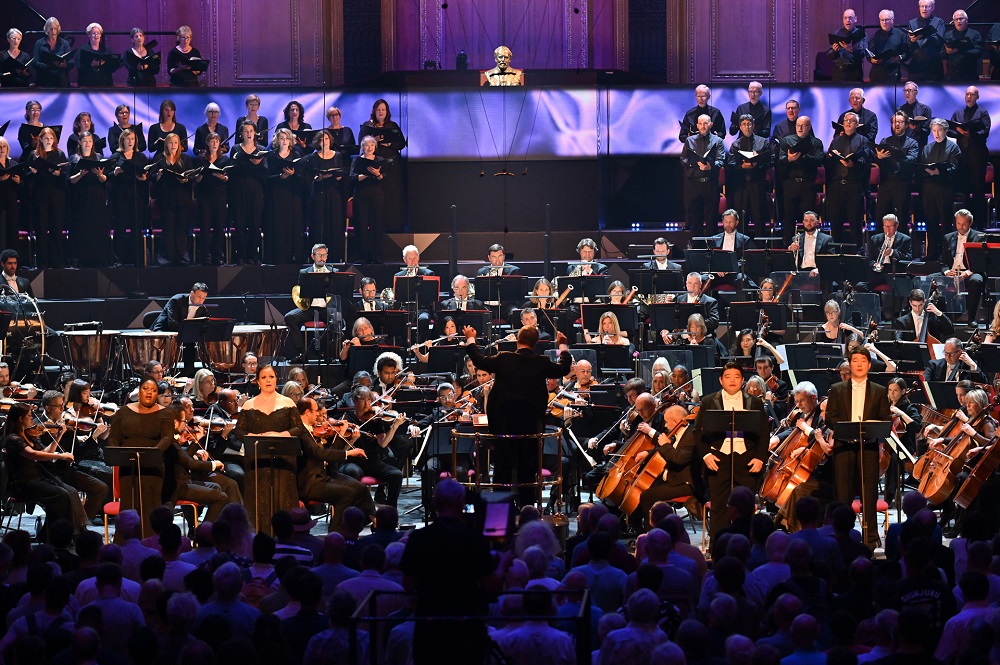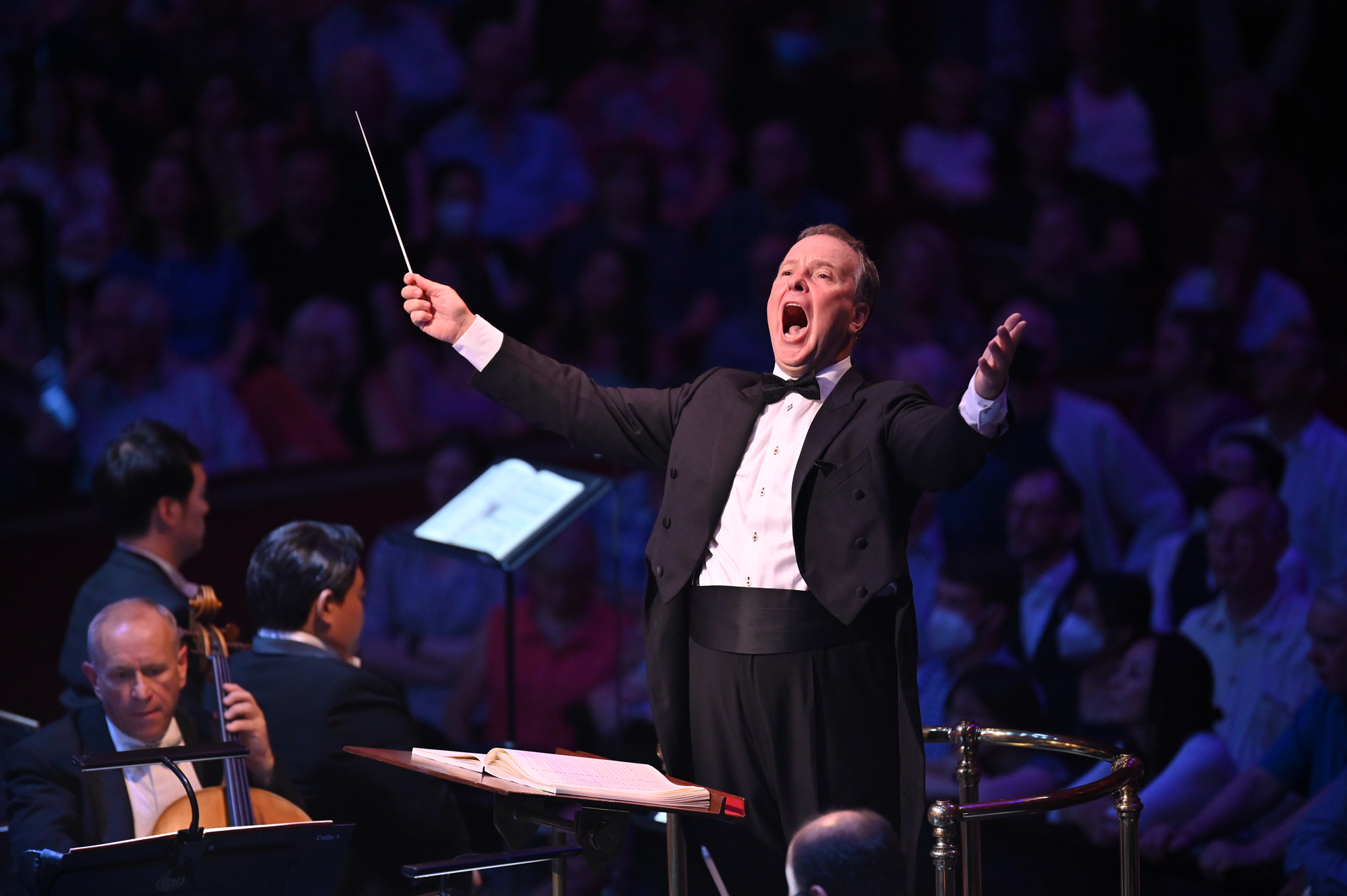Prom 1, Verdi's Requiem, BBCSO, Oramo review - introspective sorrow and consolation between the blazes | reviews, news & interviews
Prom 1, Verdi's Requiem, BBCSO, Oramo review - introspective sorrow and consolation between the blazes
Prom 1, Verdi's Requiem, BBCSO, Oramo review - introspective sorrow and consolation between the blazes
Masabane Cecilia Rangwanasha is the light that burns brightest in a hallowed ritual
Any sensitive festival planner knows to begin the return to a new normal with something soft and elegiac – reflecting on all we’ve lost and mourned these past two years, as well as what we’re facing in the world now. Just over a fortnight ago, at the East Neuk Festival, the Elias Quartet led us gently by the hand with James MacMillan’s Memento. The 2022 BBC Proms began pianissimo, massed forces at the ready for the intermittent blazes of Verdi’s Requiem.
It should have been a moving start to a Proms season which is rightly celebrating the big and the awe-inspiring. But those two years have perhaps also made us forget what unfolded in counterpoint: hacking coughs no longer discreetly masked, bottles and mobile phones clattering to the ground, the scrunching of a plastic water bottle four along (how did she do it?)
That’s what happens when you finally get 5000 people in the vasts of the Royal Albert Hall (the Prommers in the Arena are mostly, of course, rapt and intently quiet). Sakari Oramo dared to make his BBC Symphony Orchestra and the choruses as mysteriously quiet as possible – which I hope worked better on TV and radio – but it was only with the entry of the four splendid soloists that those of us distracted by unneighbourly antics felt ourselves pulled in to the expressive focus. 
Ultimately, with the Libera me, it's the soprano who has to make the biggest impression. It was obvious from her peerless, mature performance of Elisabetta's big aria in Don Carlo at the BBC Cardiff Singer of the World competition - the outstanding offering of the finale, though three of the other finalists were also superb – that Masabane Cecilia Rangwanasha (pictured below with Johnston to the right) would excel. Her commitment, involvement, referencing of Oramo when it most mattered were allied to a voice which may seem naturally lyric, but can still pull out the big guns when necessary. 
But then if you don't at least have tears in your eyes at several points in Verdi's great masterpiece, it hasn't worked. They came thick and fast from the first ensemble of soloists and chorus onwards, and the BBC Symphony Orchestra woodwind principals were as much stars in making it happen as the vocal soloists, above all flautist Daniel Pailthorpe (and the flute trio meshing with the soprano and mezzo in octaves is such a slice of heaven), Alison Teale's miraculously phrased oboe solo in the "Ingemisco" and Julie Price making you hear more singing in the first bassoon part than I've ever noticed before. Brass ensembles were rich and thrilling, the spatial effects of the "Tuba mirum" never better than in the Albert Hall, while the combined forces of the BBC Symphony Chorus and Crouch End Festival Chorus ran the dynamic gamut with perfect focus. 
rating
Explore topics
Share this article
Add comment
The future of Arts Journalism
You can stop theartsdesk.com closing!
We urgently need financing to survive. Our fundraising drive has thus far raised £49,000 but we need to reach £100,000 or we will be forced to close. Please contribute here: https://gofund.me/c3f6033d
And if you can forward this information to anyone who might assist, we’d be grateful.

Subscribe to theartsdesk.com
Thank you for continuing to read our work on theartsdesk.com. For unlimited access to every article in its entirety, including our archive of more than 15,000 pieces, we're asking for £5 per month or £40 per year. We feel it's a very good deal, and hope you do too.
To take a subscription now simply click here.
And if you're looking for that extra gift for a friend or family member, why not treat them to a theartsdesk.com gift subscription?
more Classical music
 BBC Proms: First Night, Batiashvili, BBCSO, Oramo review - glorious Vaughan Williams
Spirited festival opener is crowned with little-heard choral epic
BBC Proms: First Night, Batiashvili, BBCSO, Oramo review - glorious Vaughan Williams
Spirited festival opener is crowned with little-heard choral epic
 Interview: Quinteto Astor Piazzolla on playing in London and why Mick Jagger's a fan
Music Director Julián Vat and pianist Matias Feigin compare notes on Piazzolla
Interview: Quinteto Astor Piazzolla on playing in London and why Mick Jagger's a fan
Music Director Julián Vat and pianist Matias Feigin compare notes on Piazzolla
 Classical CDs: Bells, birdsong and braggadocio
British contemporary music, percussive piano concertos and a talented baritone sings Mozart
Classical CDs: Bells, birdsong and braggadocio
British contemporary music, percussive piano concertos and a talented baritone sings Mozart
 Siglo de Oro, Wigmore Hall review - electronic Lamentations and Trojan tragedy
Committed and intense performance of a newly-commissioned oratorio
Siglo de Oro, Wigmore Hall review - electronic Lamentations and Trojan tragedy
Committed and intense performance of a newly-commissioned oratorio
 Alfred Brendel 1931-2025 - a personal tribute
A master of feeling and intellect
Alfred Brendel 1931-2025 - a personal tribute
A master of feeling and intellect
 Aldeburgh Festival, Weekend 2 review - nine premieres, three young ensembles - and Allan Clayton
A solstice sunrise swim crowned the best of times at this phoenix of a festival
Aldeburgh Festival, Weekend 2 review - nine premieres, three young ensembles - and Allan Clayton
A solstice sunrise swim crowned the best of times at this phoenix of a festival
 RNCM International Diploma Artists, BBC Philharmonic, MediaCity, Salford review - spotting stars of tomorrow
Cream of the graduate crop from Manchester's Music College show what they can do
RNCM International Diploma Artists, BBC Philharmonic, MediaCity, Salford review - spotting stars of tomorrow
Cream of the graduate crop from Manchester's Music College show what they can do
 Classical CDs: Bells, whistles and bowing techniques
A great pianist's early recordings boxed up, plus classical string quartets, French piano trios and a big American symphony
Classical CDs: Bells, whistles and bowing techniques
A great pianist's early recordings boxed up, plus classical string quartets, French piano trios and a big American symphony
 Monteverdi Choir, English Baroque Soloists, Suzuki, St Martin-in-the-Fields review - the perfect temperature for Bach
A dream cantata date for Japanese maestro and local supergroup
Monteverdi Choir, English Baroque Soloists, Suzuki, St Martin-in-the-Fields review - the perfect temperature for Bach
A dream cantata date for Japanese maestro and local supergroup

Comments
first night of the proms 2022
Probably you're referring to
Probably you're referring to the ophicleide, much beloved of Berlioz - comes in several sizes but the biggest is seen as forerunner of the tuba. From where I was sitting, I couldn't see, but I'm sure it loomed large on the telly.
It was a cimbasso which is a
Thanks for the clarification,
Thanks for the clarification, Michael. Next, bring on the Aida trumpets.